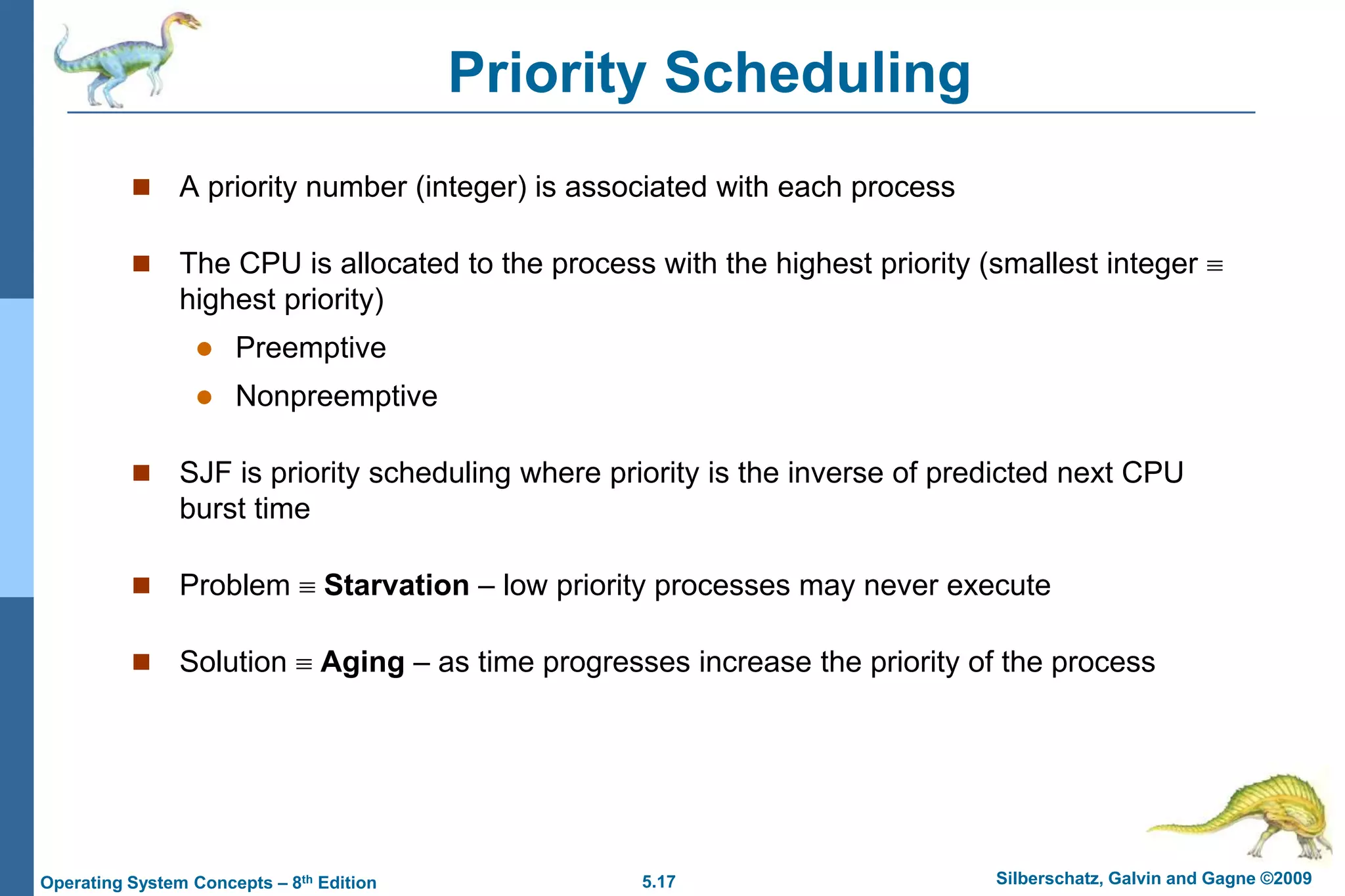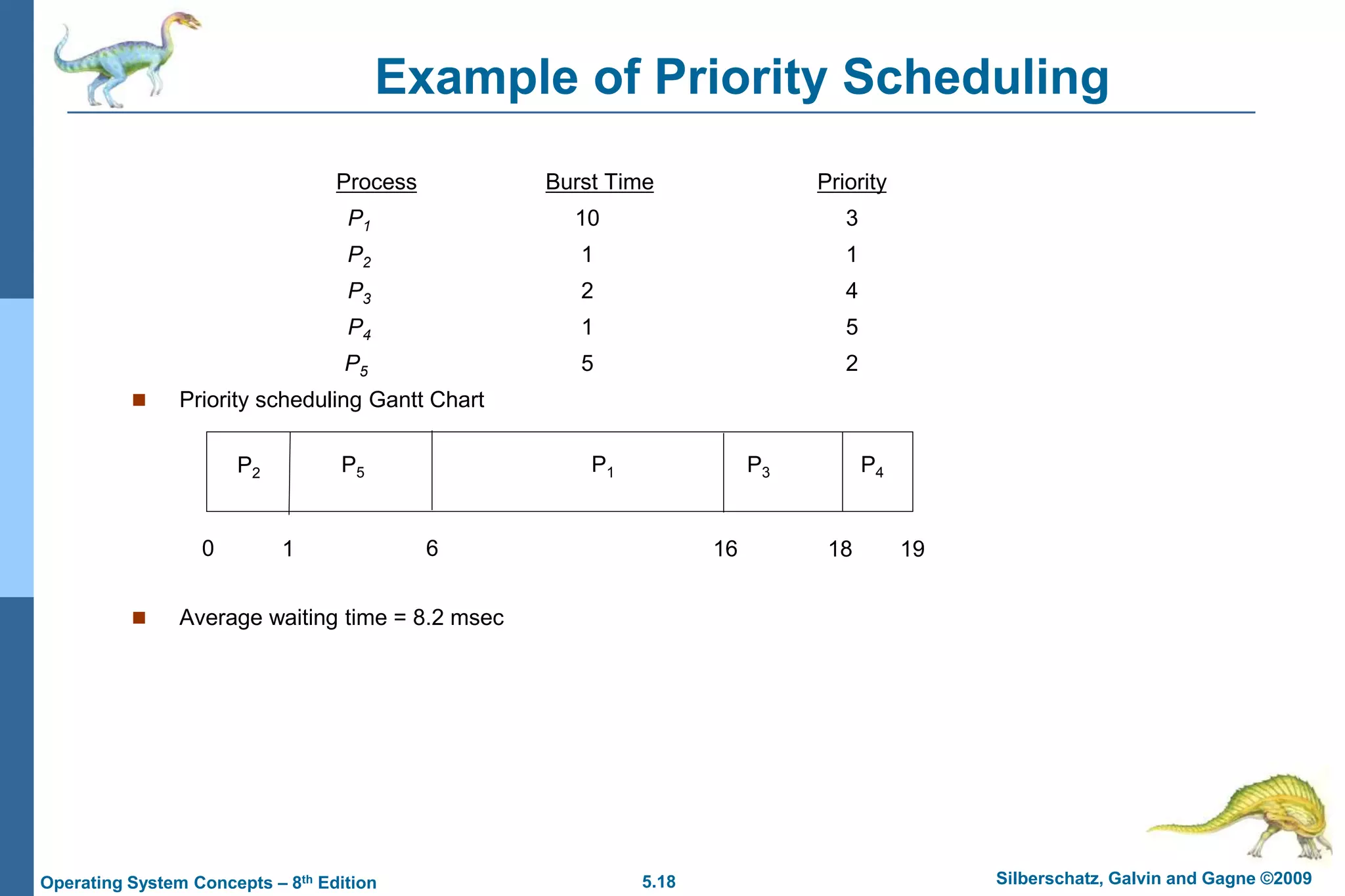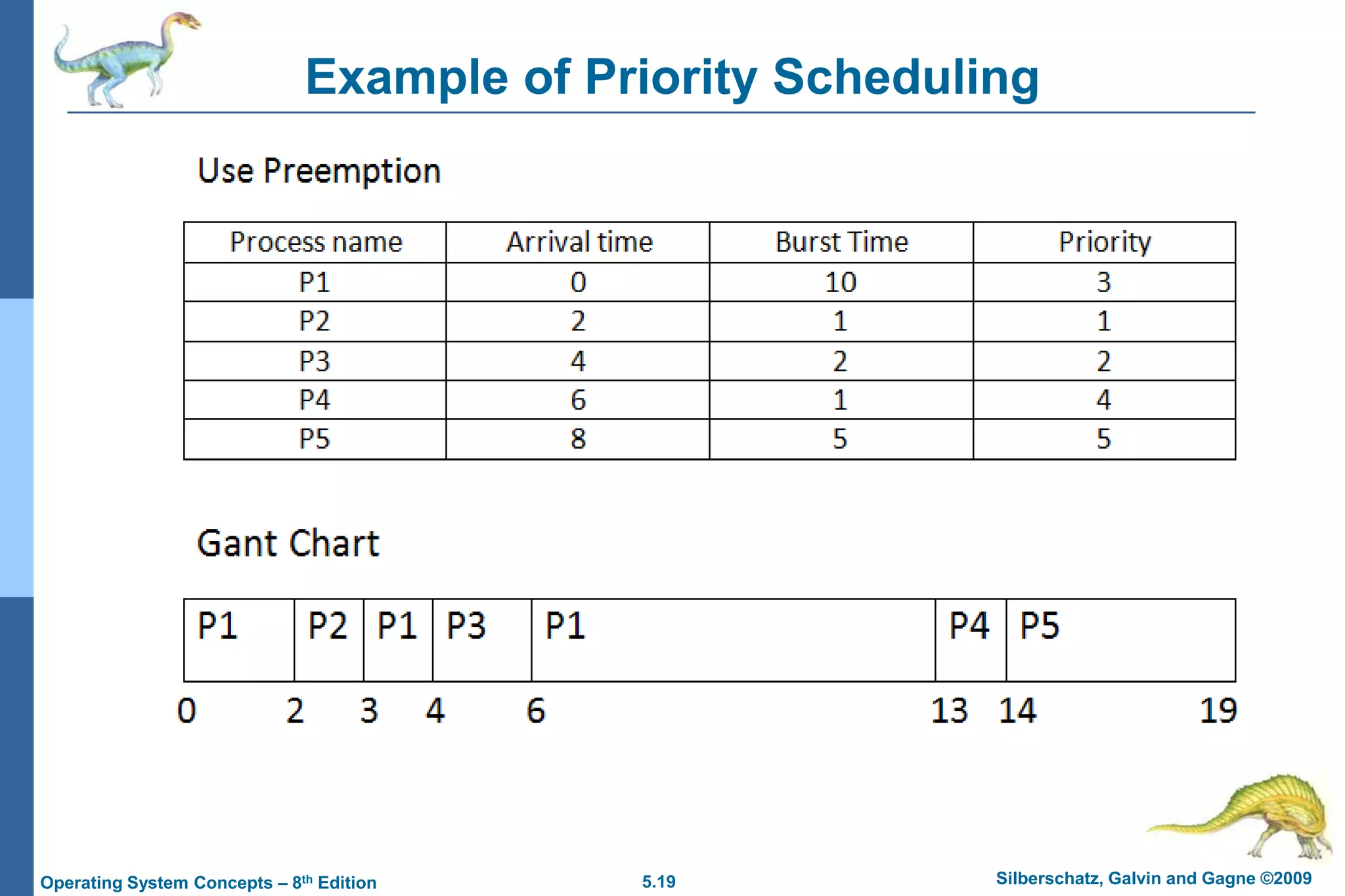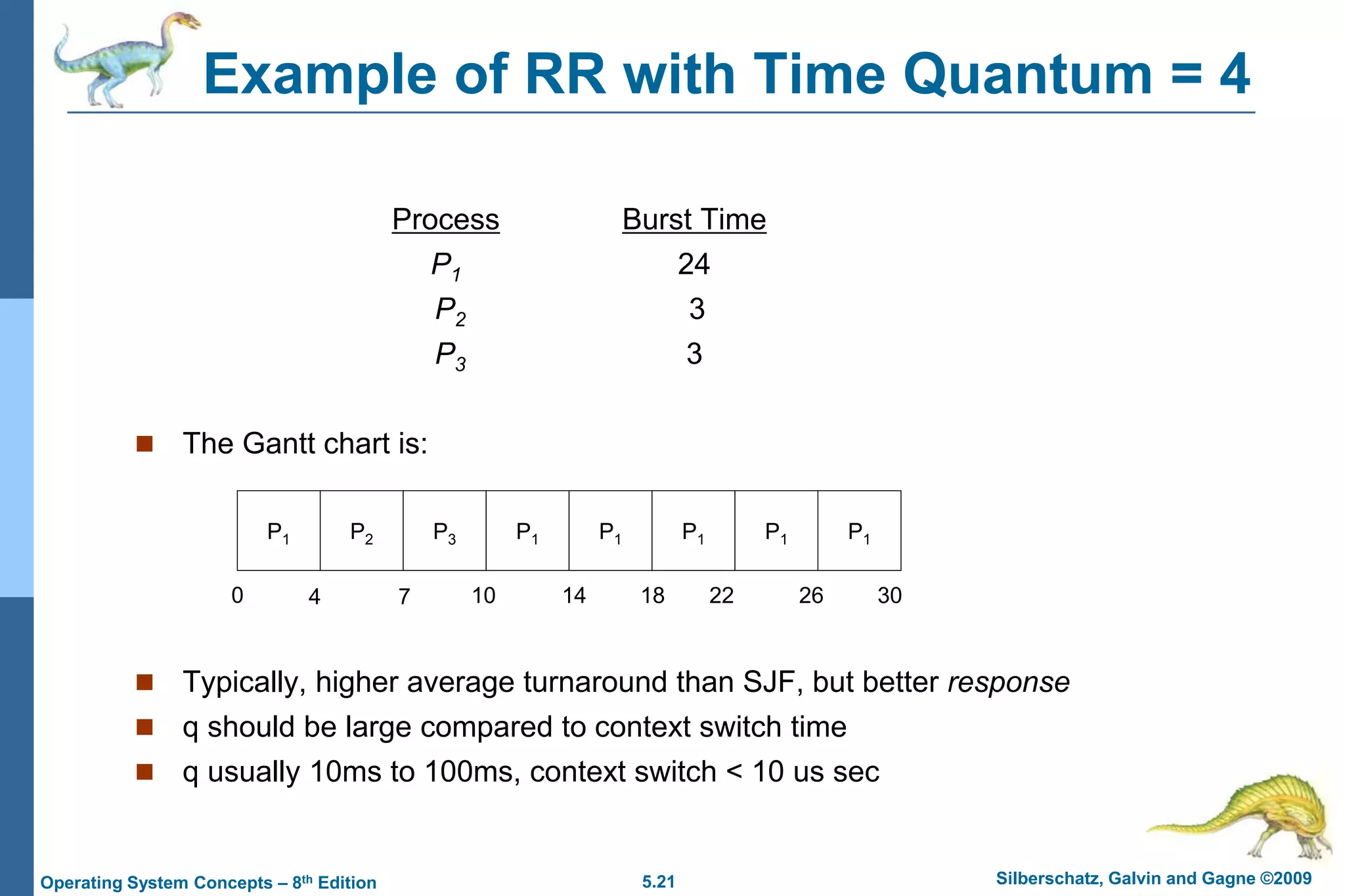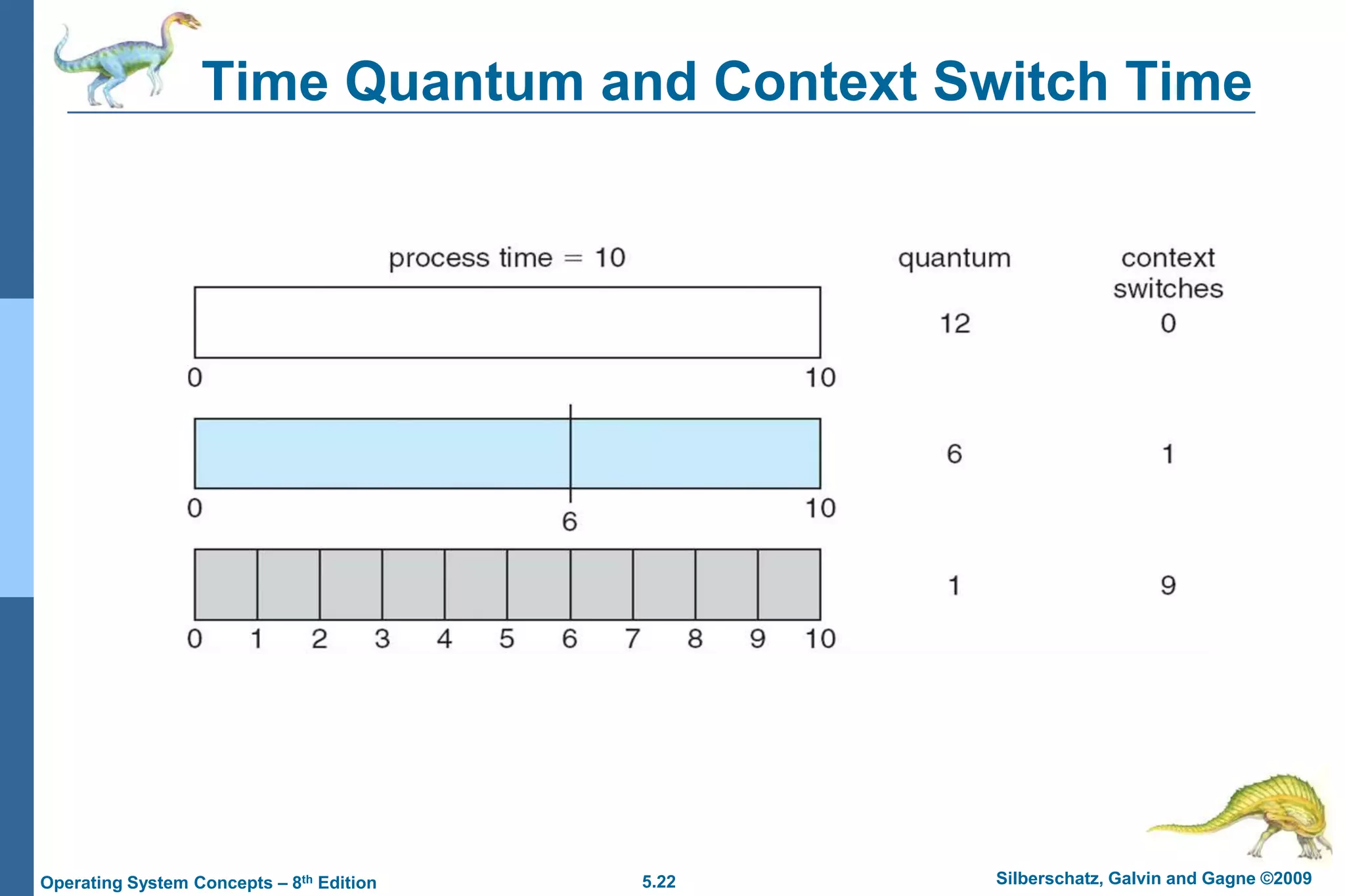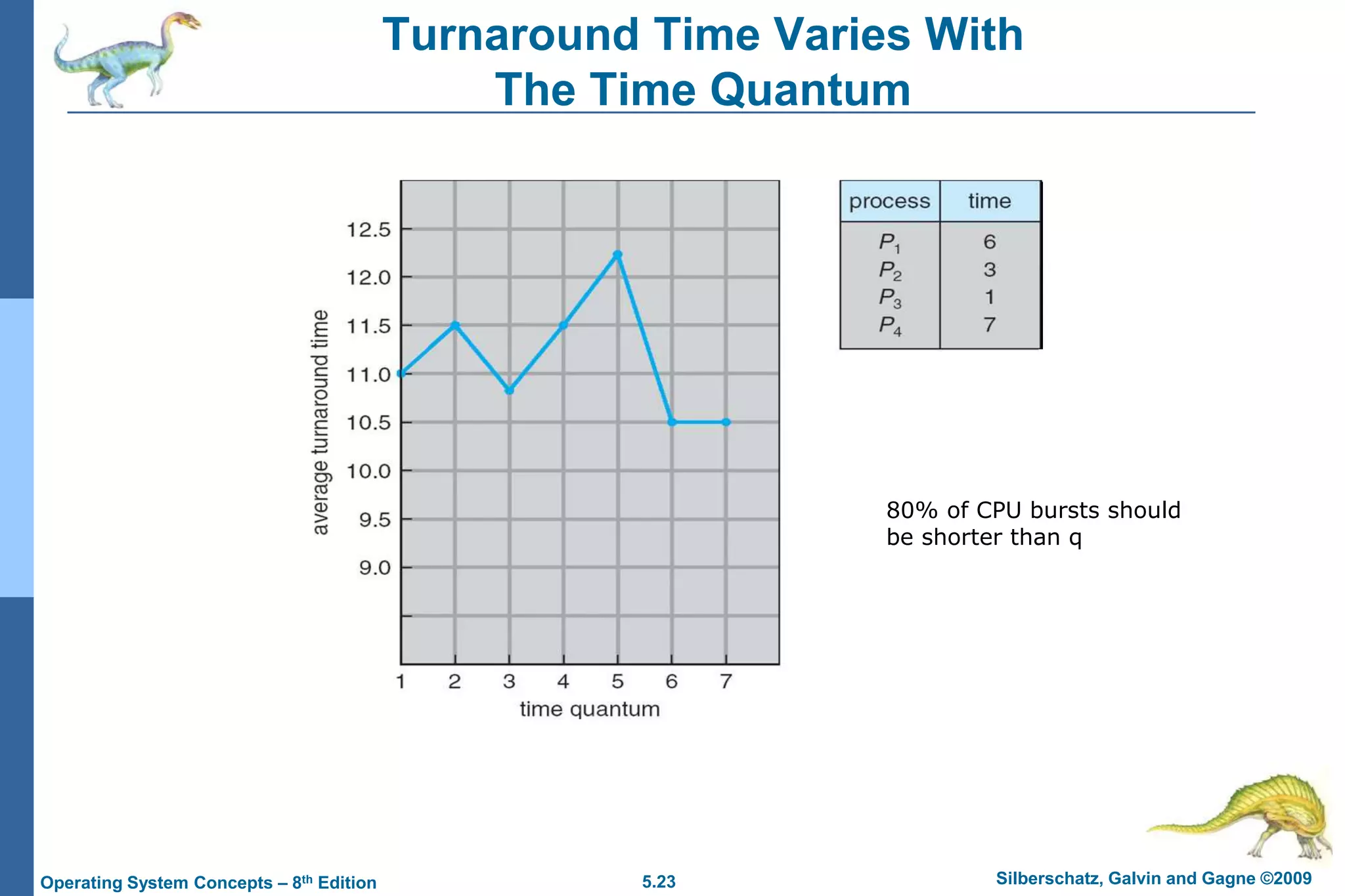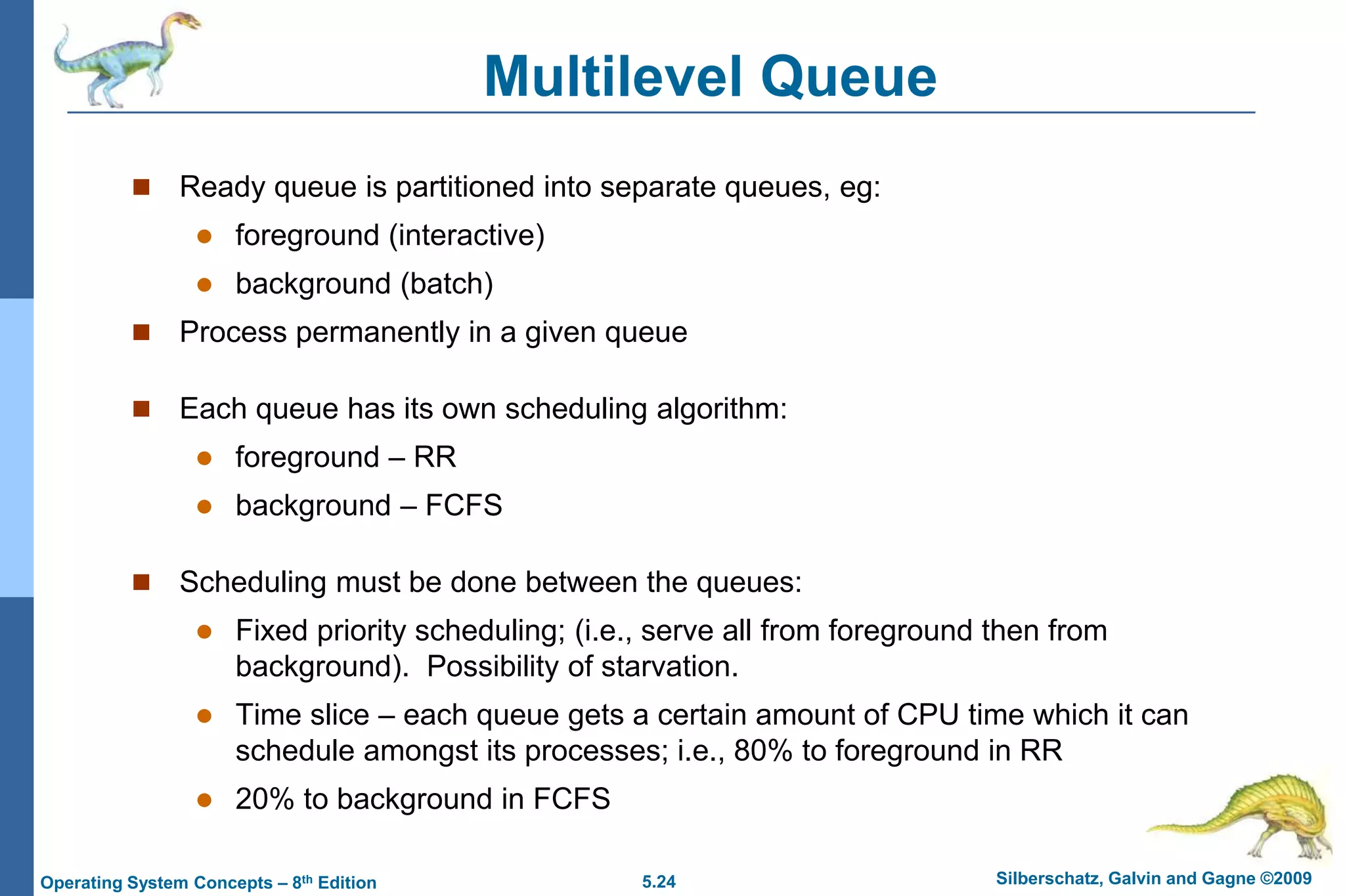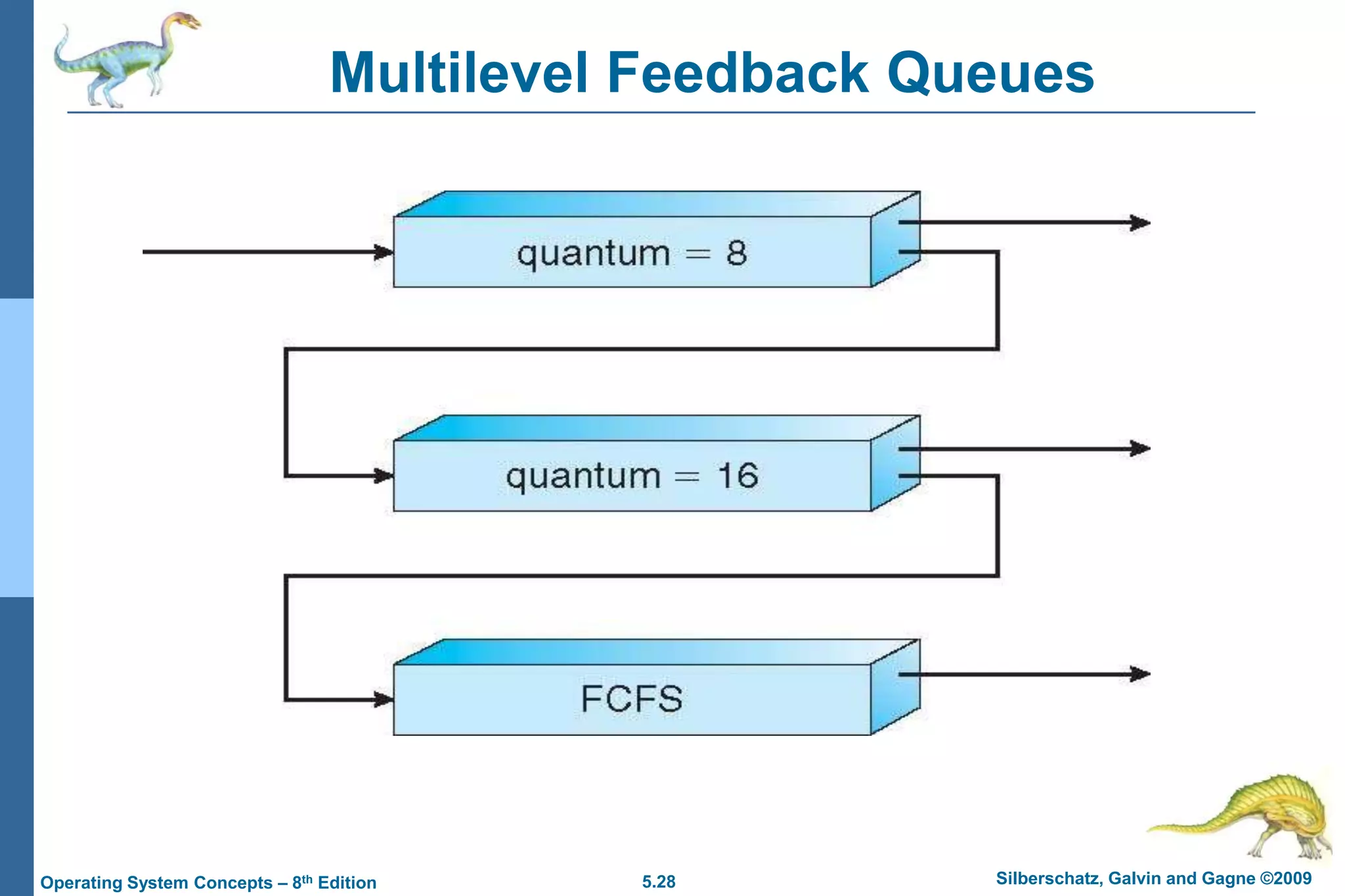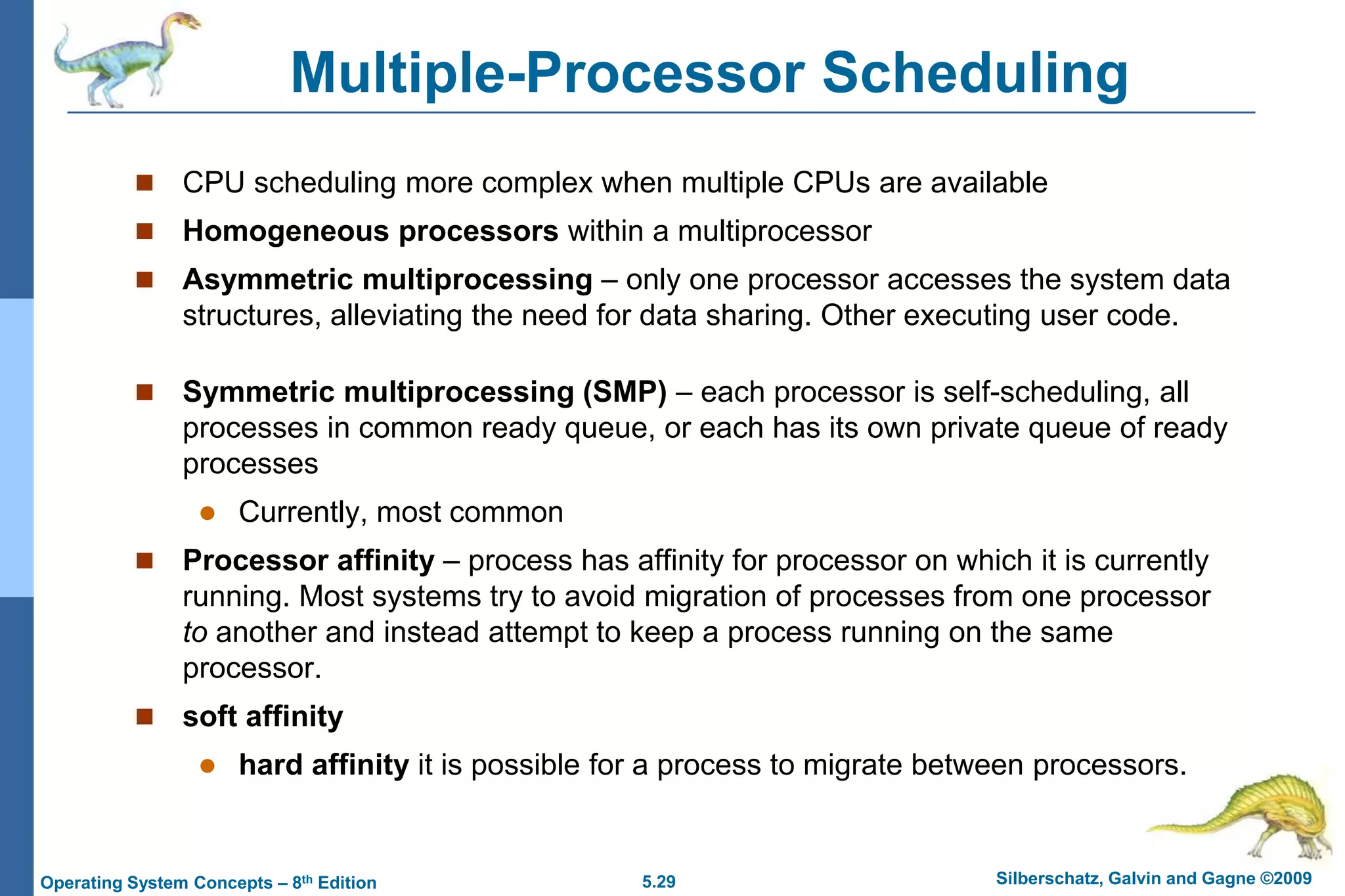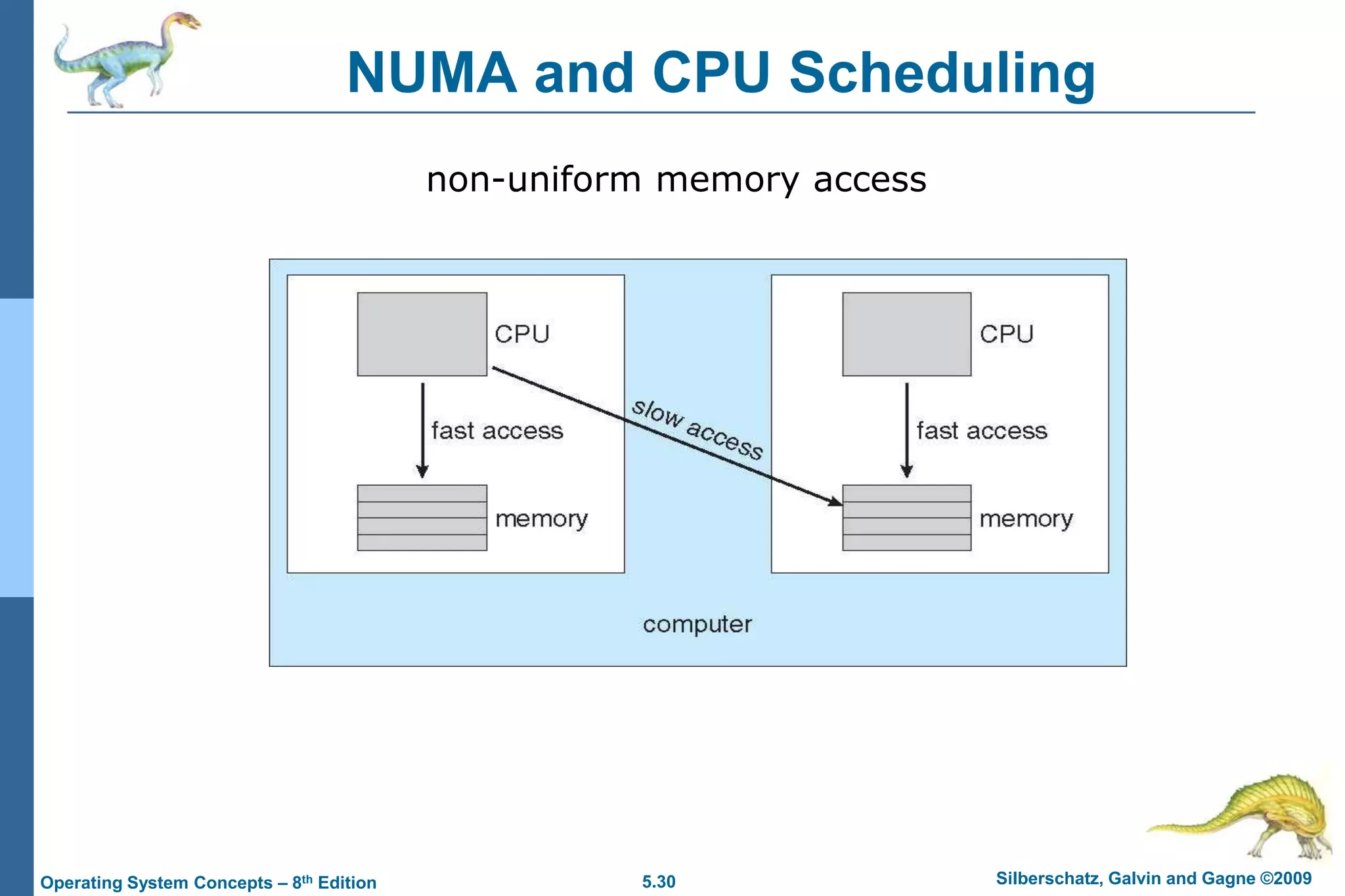This document summarizes key concepts from Chapter 5 of the textbook "Operating System Concepts - 8th Edition" regarding CPU scheduling. It introduces CPU scheduling as the basis for multiprogrammed operating systems. Various scheduling algorithms are described such as first-come first-served, shortest job first, priority scheduling, and round robin. Criteria for evaluating scheduling algorithms include CPU utilization, throughput, turnaround time, waiting time, and response time. Ready queues can be partitioned into multiple levels with different scheduling policies to implement multilevel queue and feedback queue scheduling.
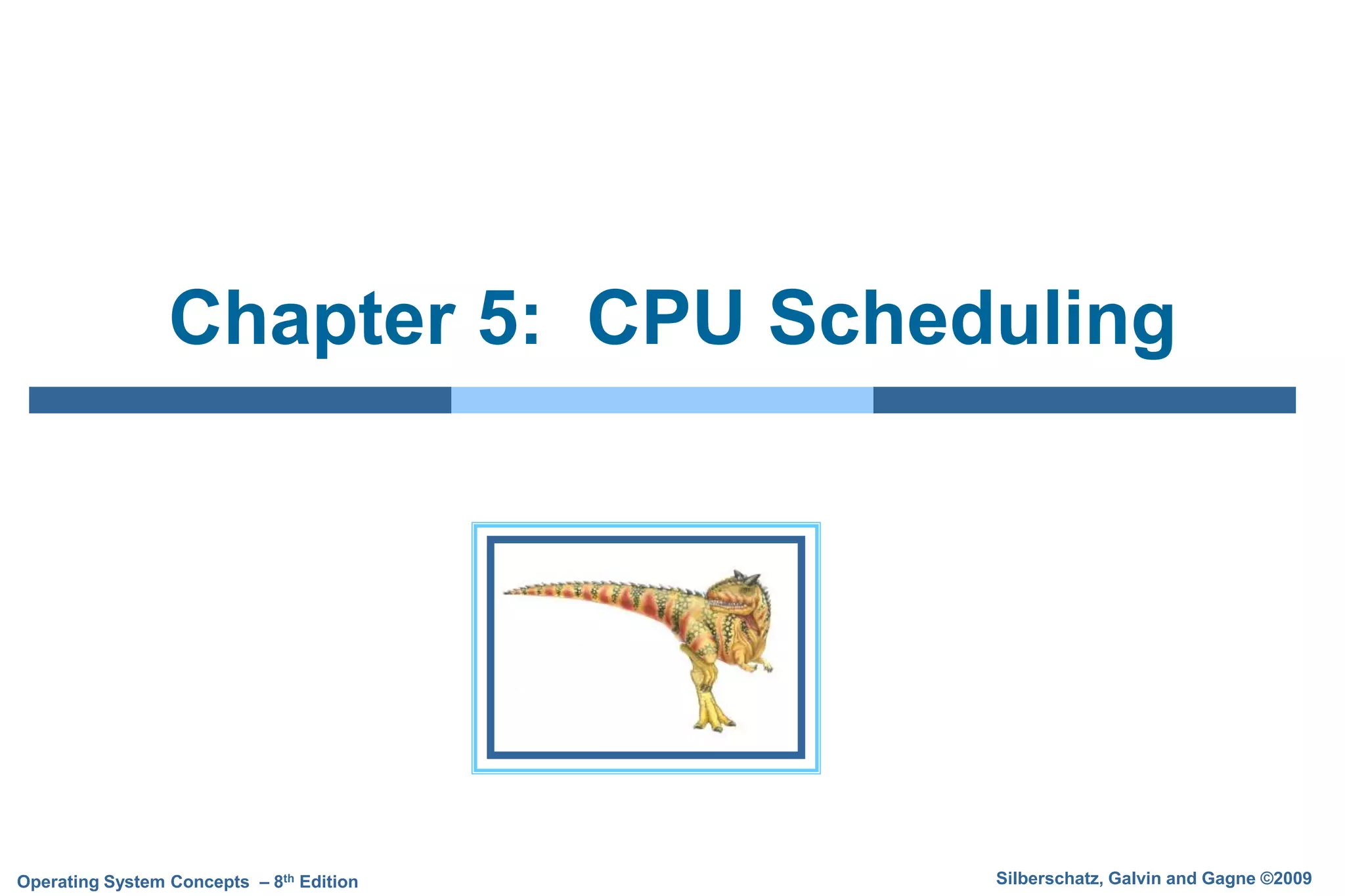
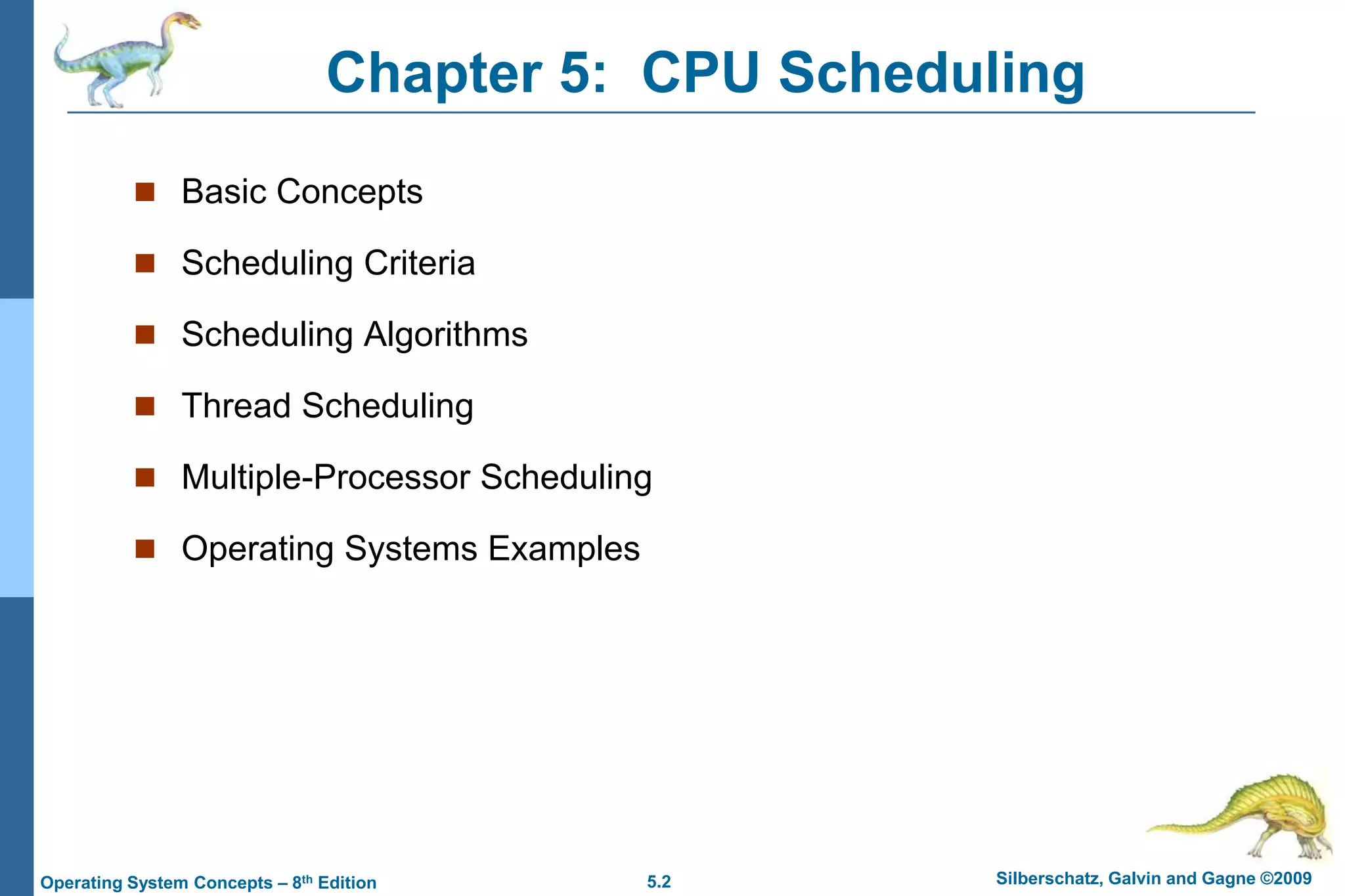
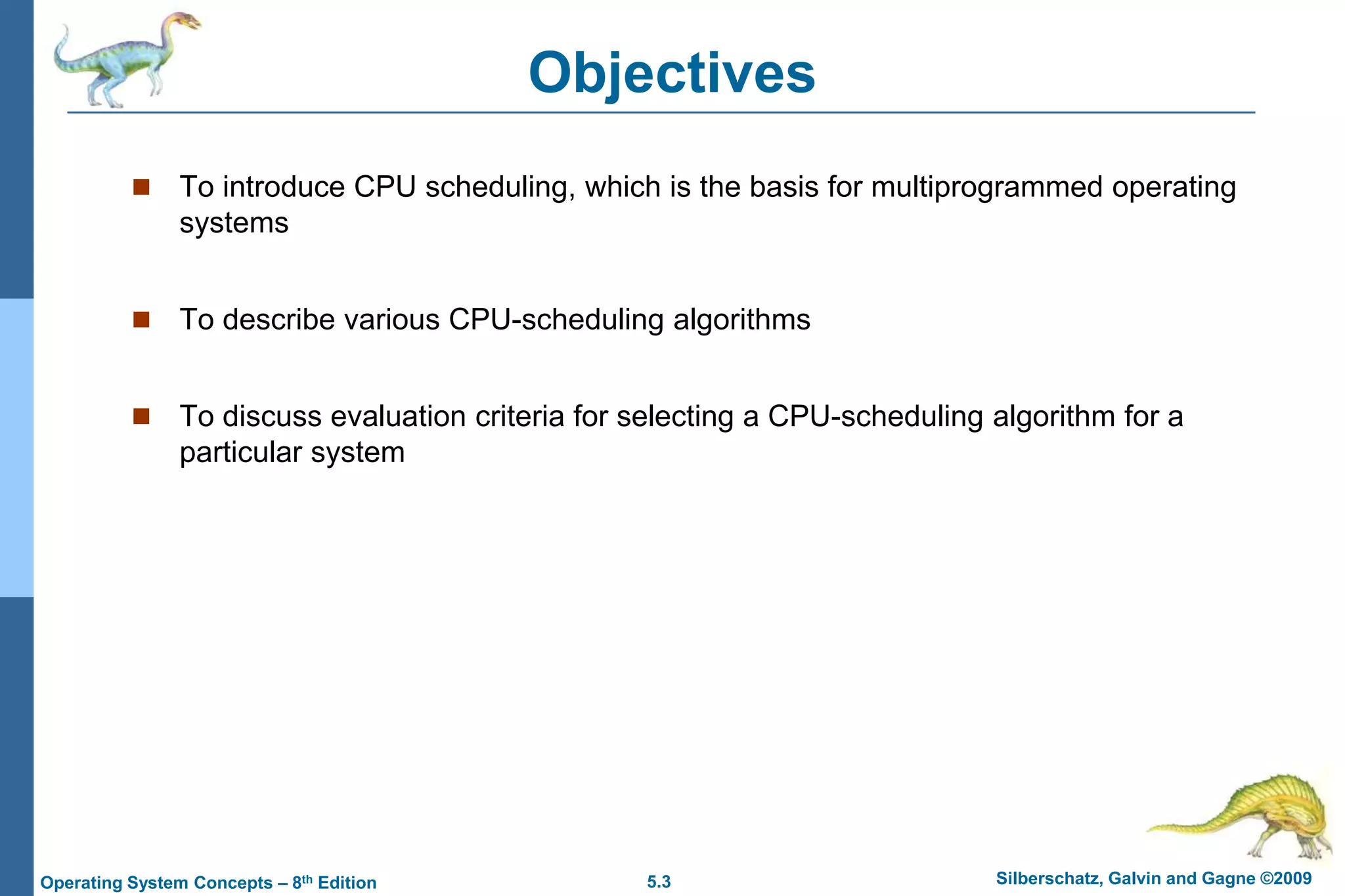
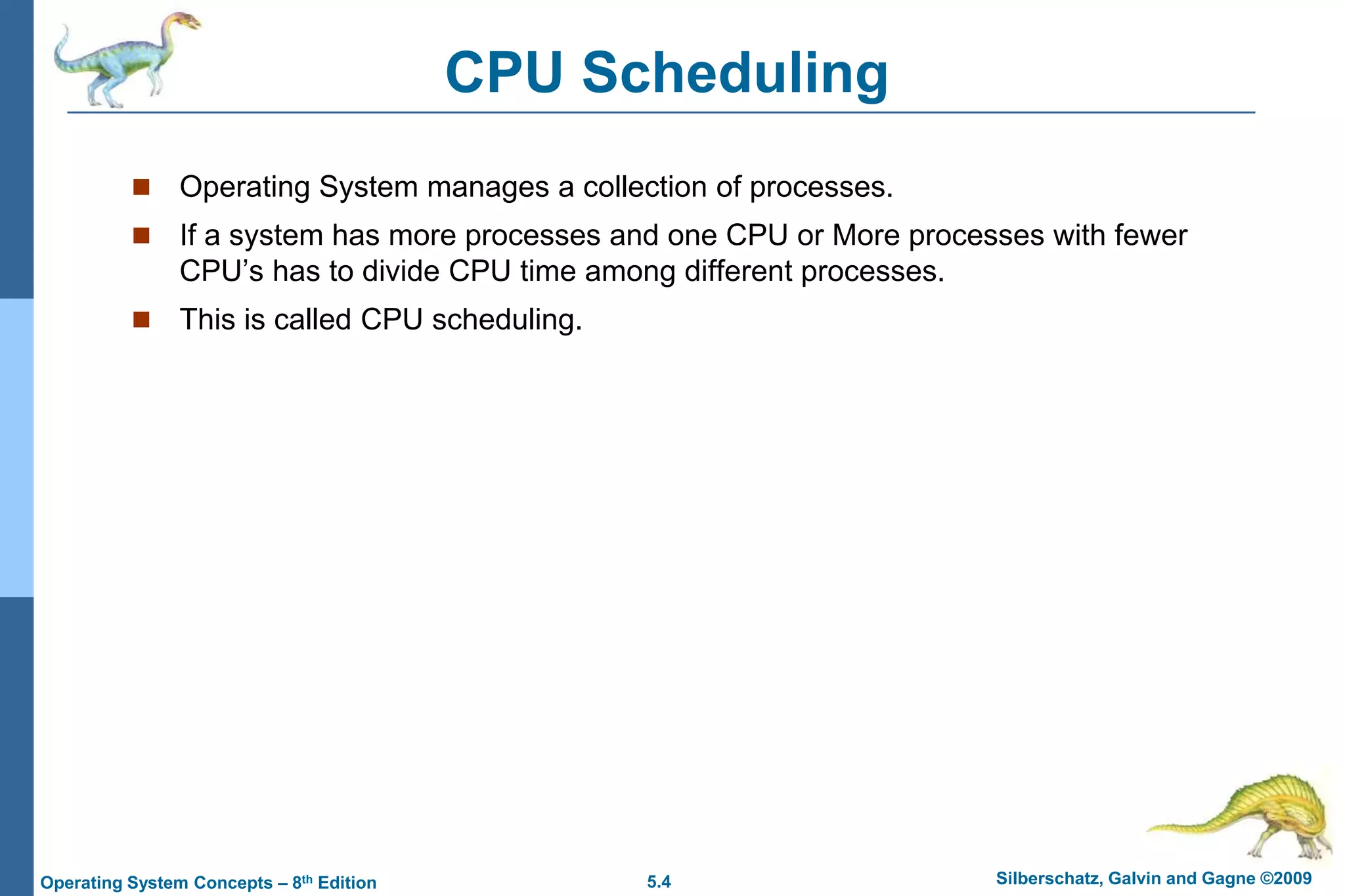
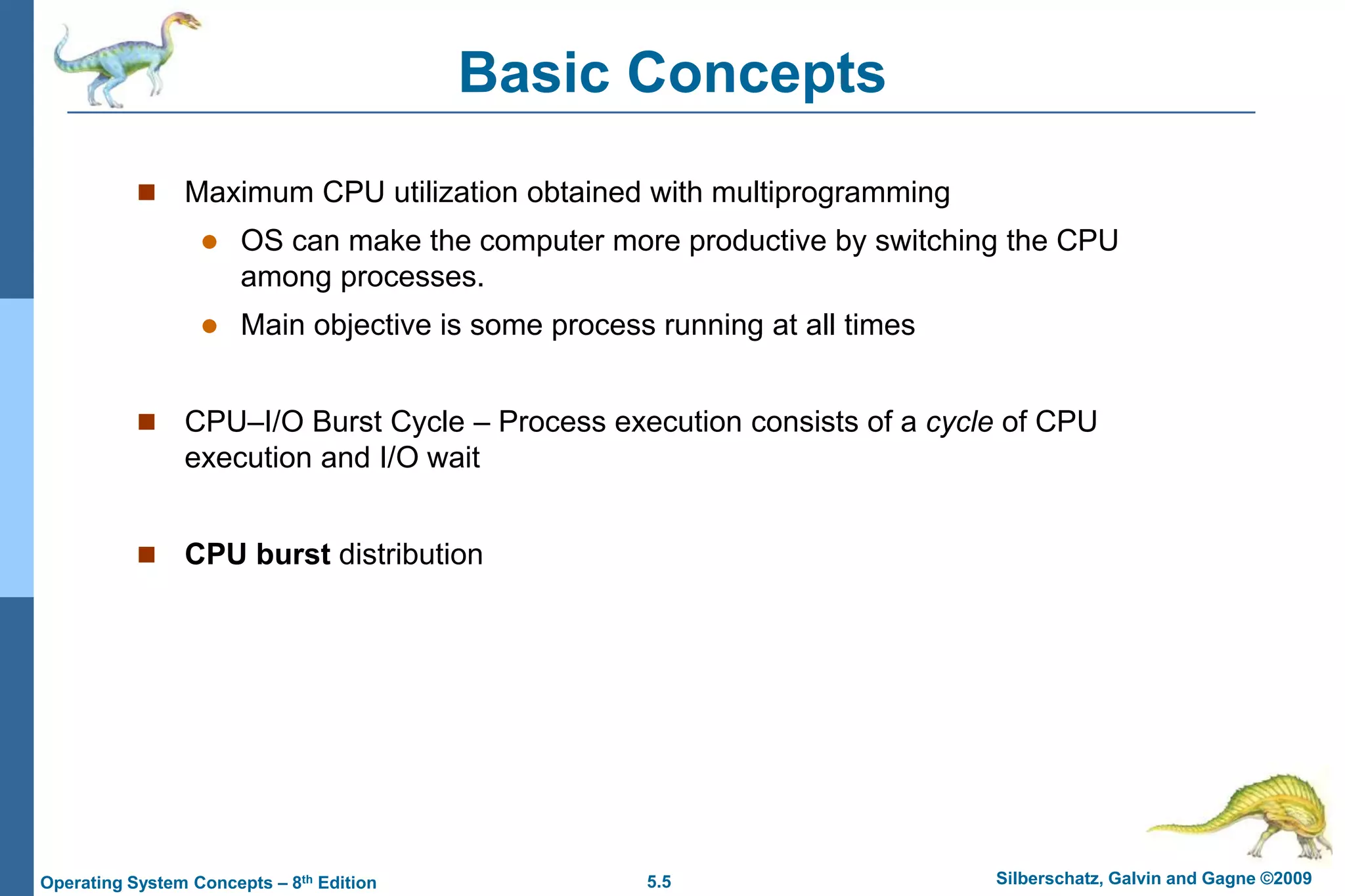

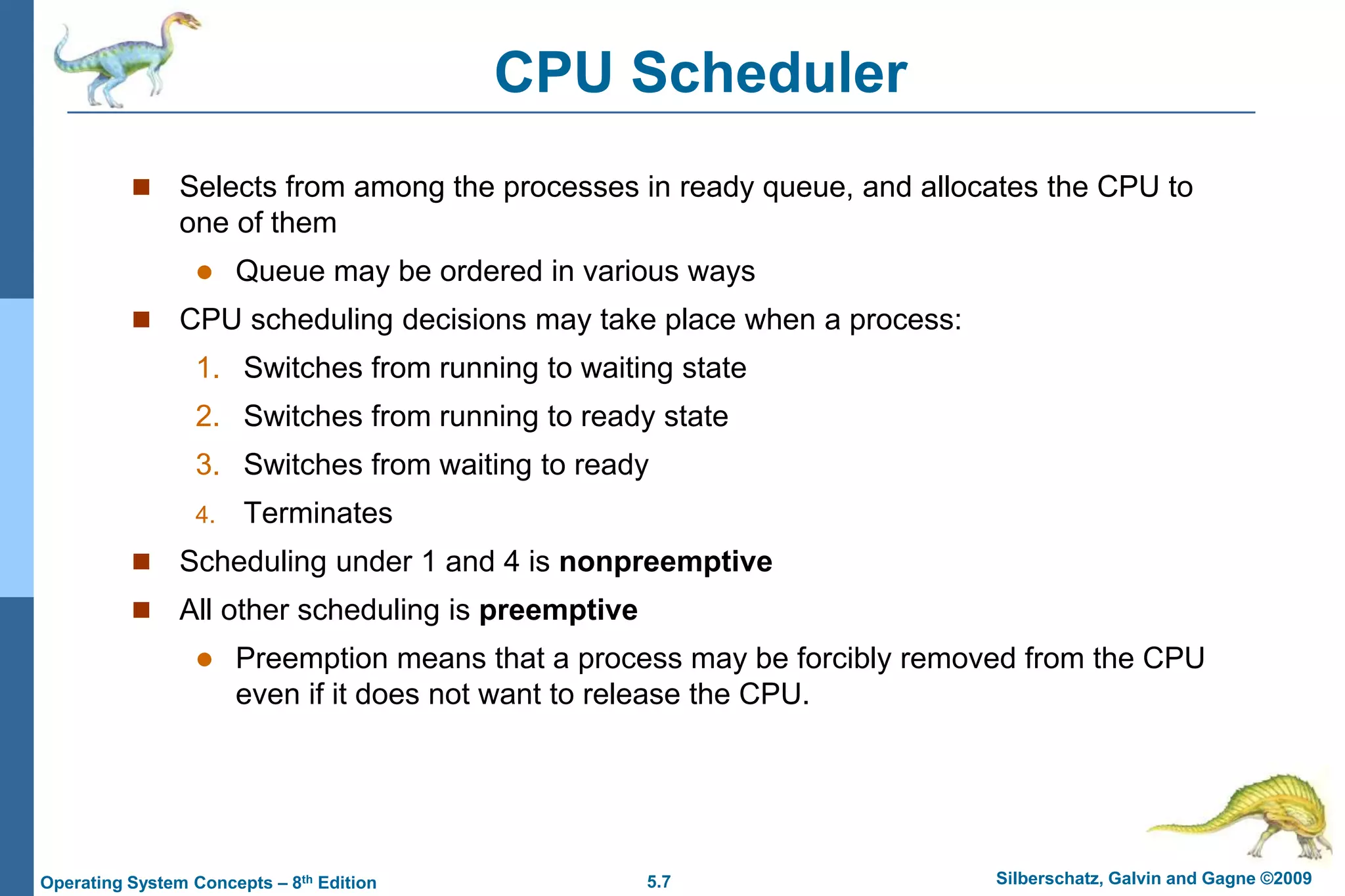

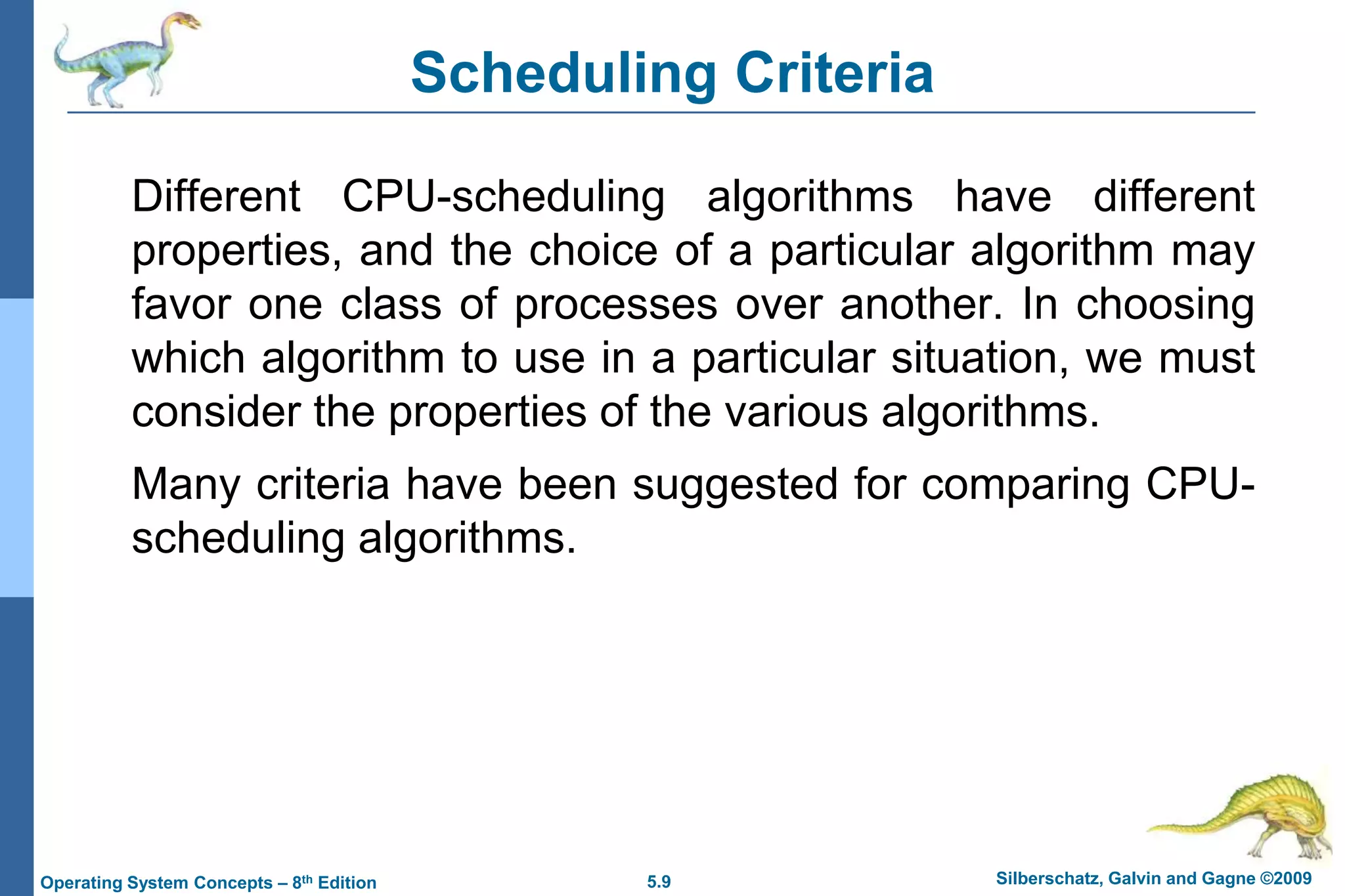
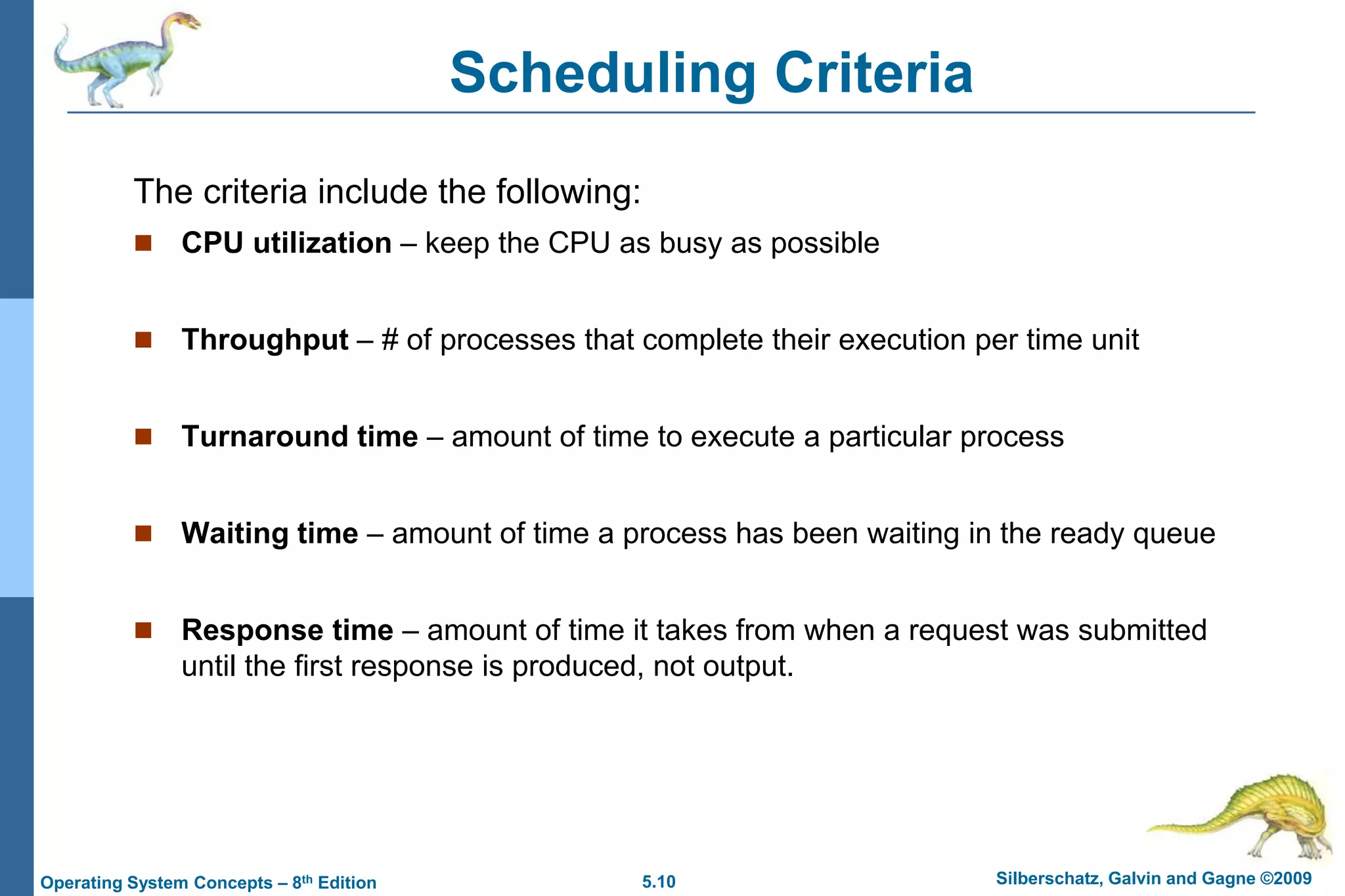
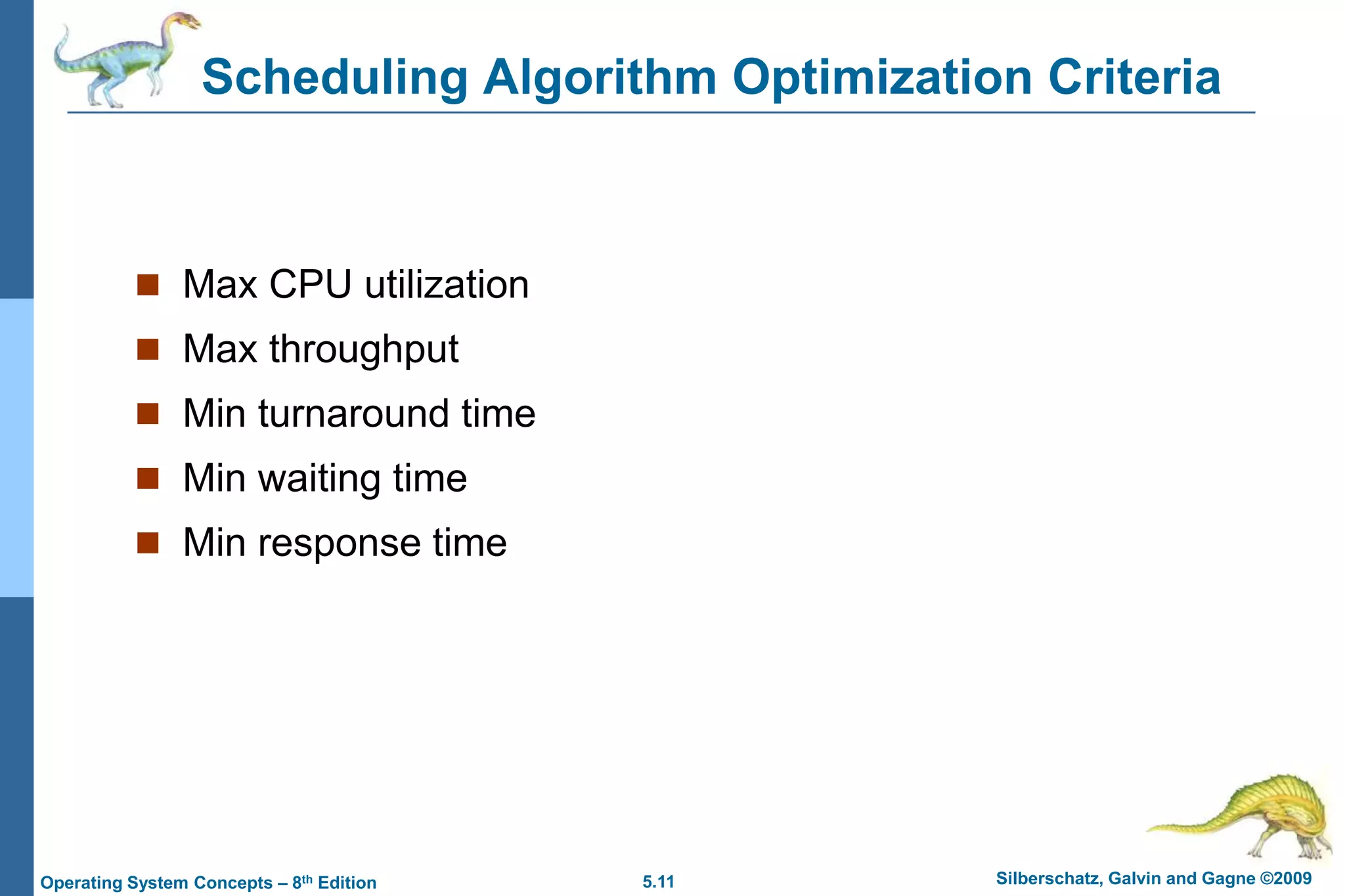
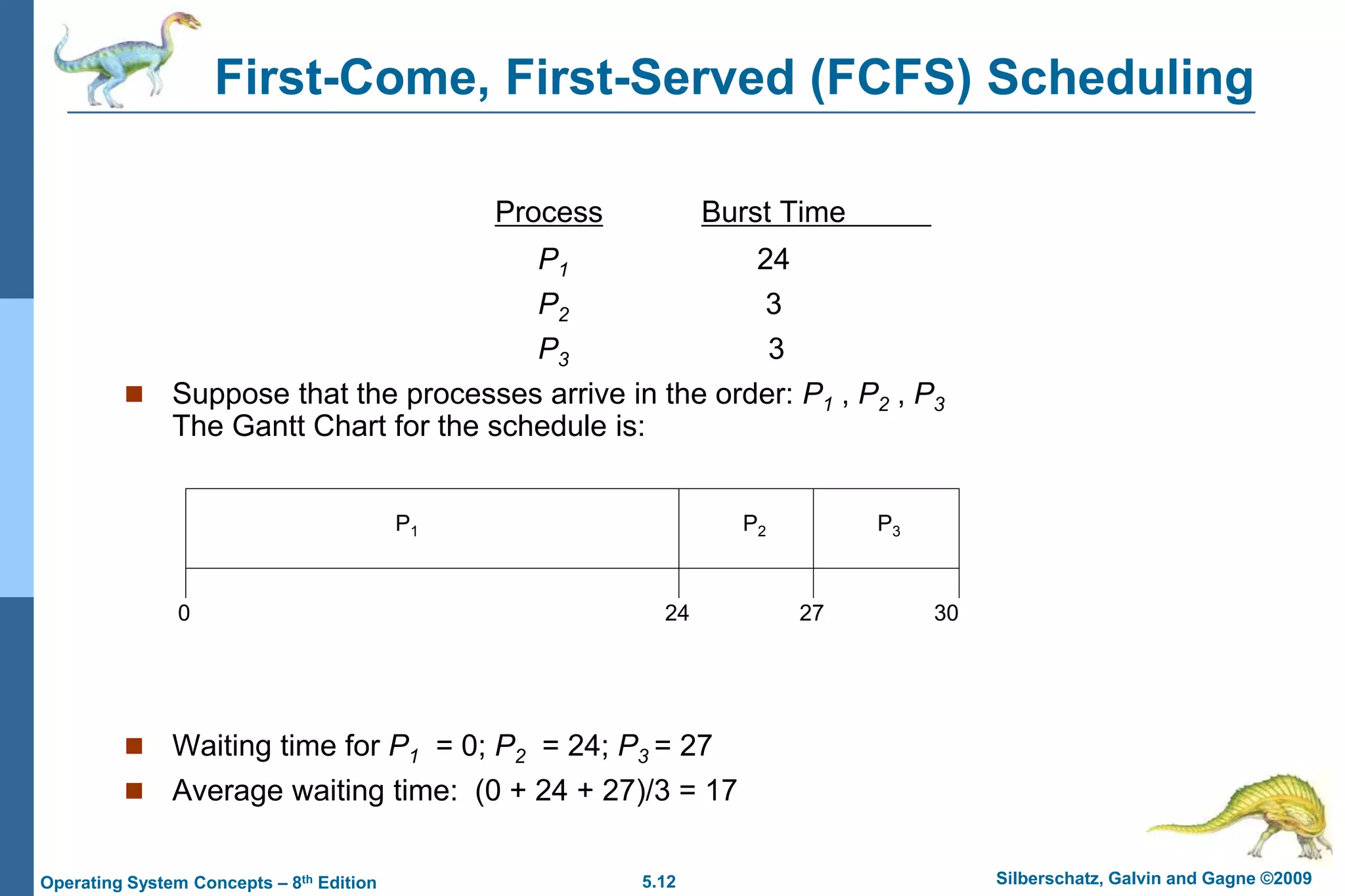

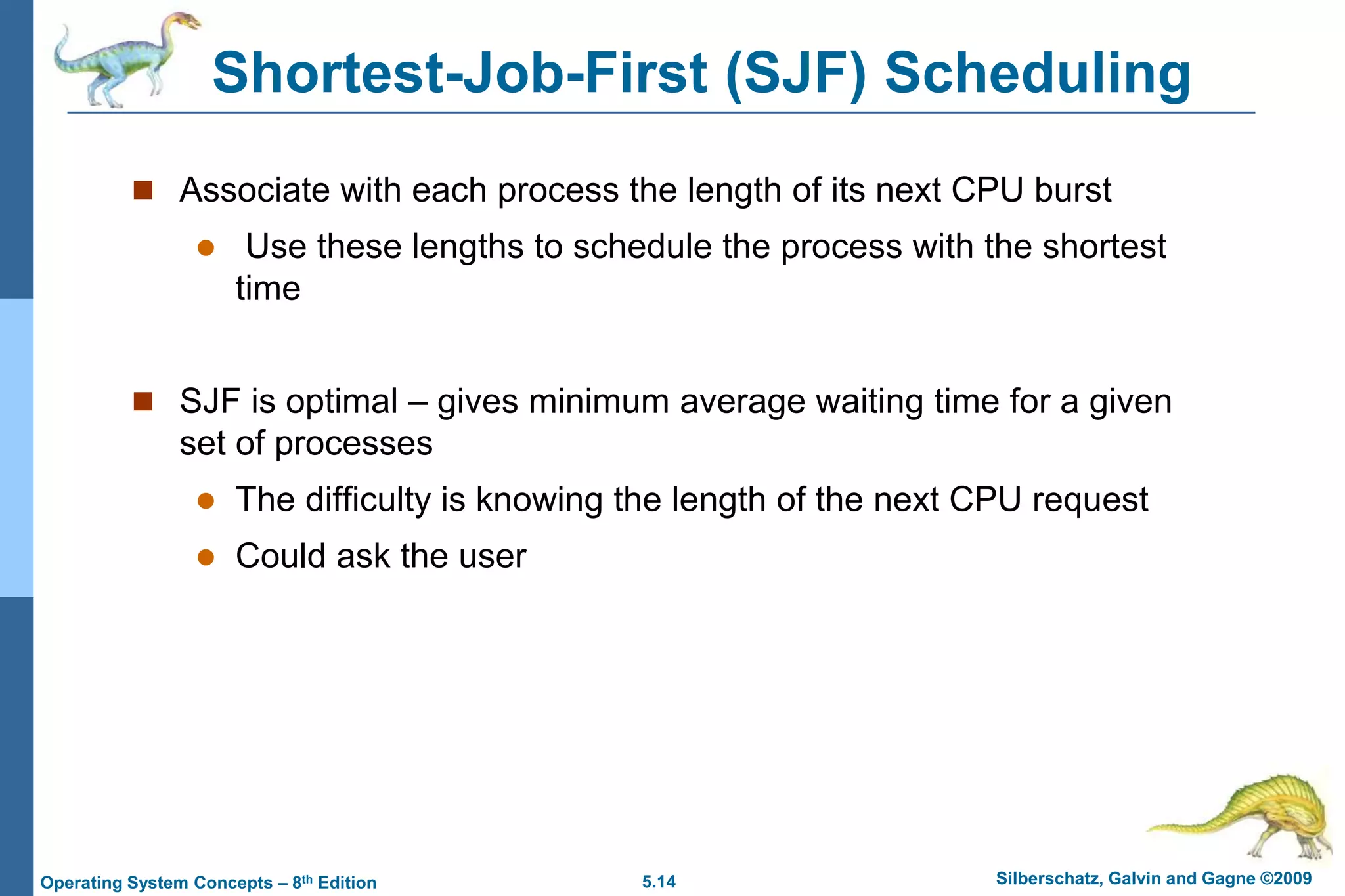
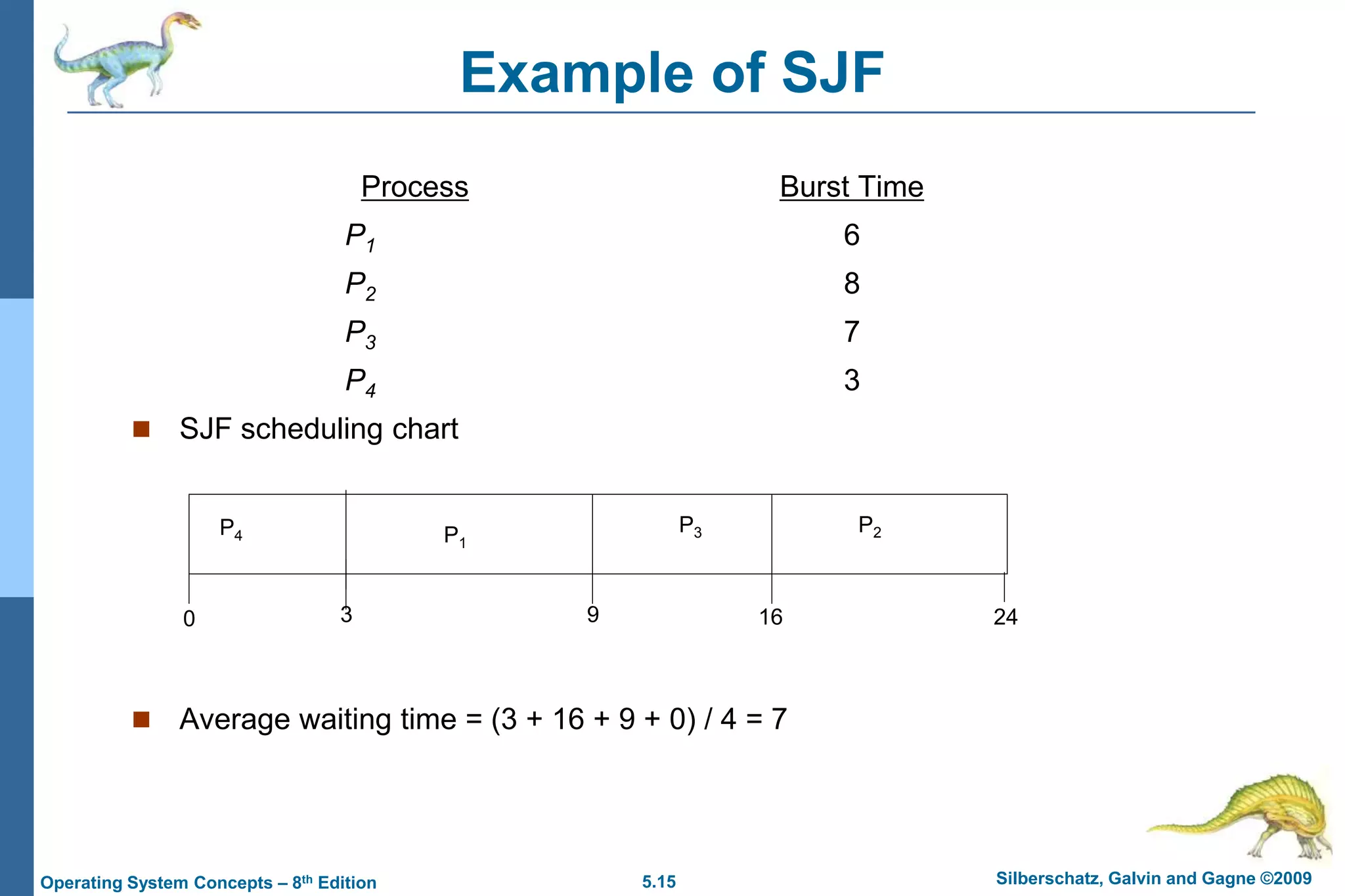
![5.16 Silberschatz, Galvin and Gagne ©2009Operating System Concepts – 8th Edition
Example of Shortest-remaining-time-first
Now we add the concepts of varying arrival times and preemption to the analysis
ProcessA arri Arrival TimeT Burst Time
P1 0 8
P2 1 4
P3 2 9
P4 3 5
Preemptive SJF Gantt Chart
Average waiting time = [(10-1)+(1-1)+(17-2)+5-3)]/4 = 26/4 = 6.5 msec
P1
P1P2
1 170 10
P3
265
P4](https://image.slidesharecdn.com/05cpuscheduling-150630045230-lva1-app6891/75/cpu-scheduling-16-2048.jpg)
